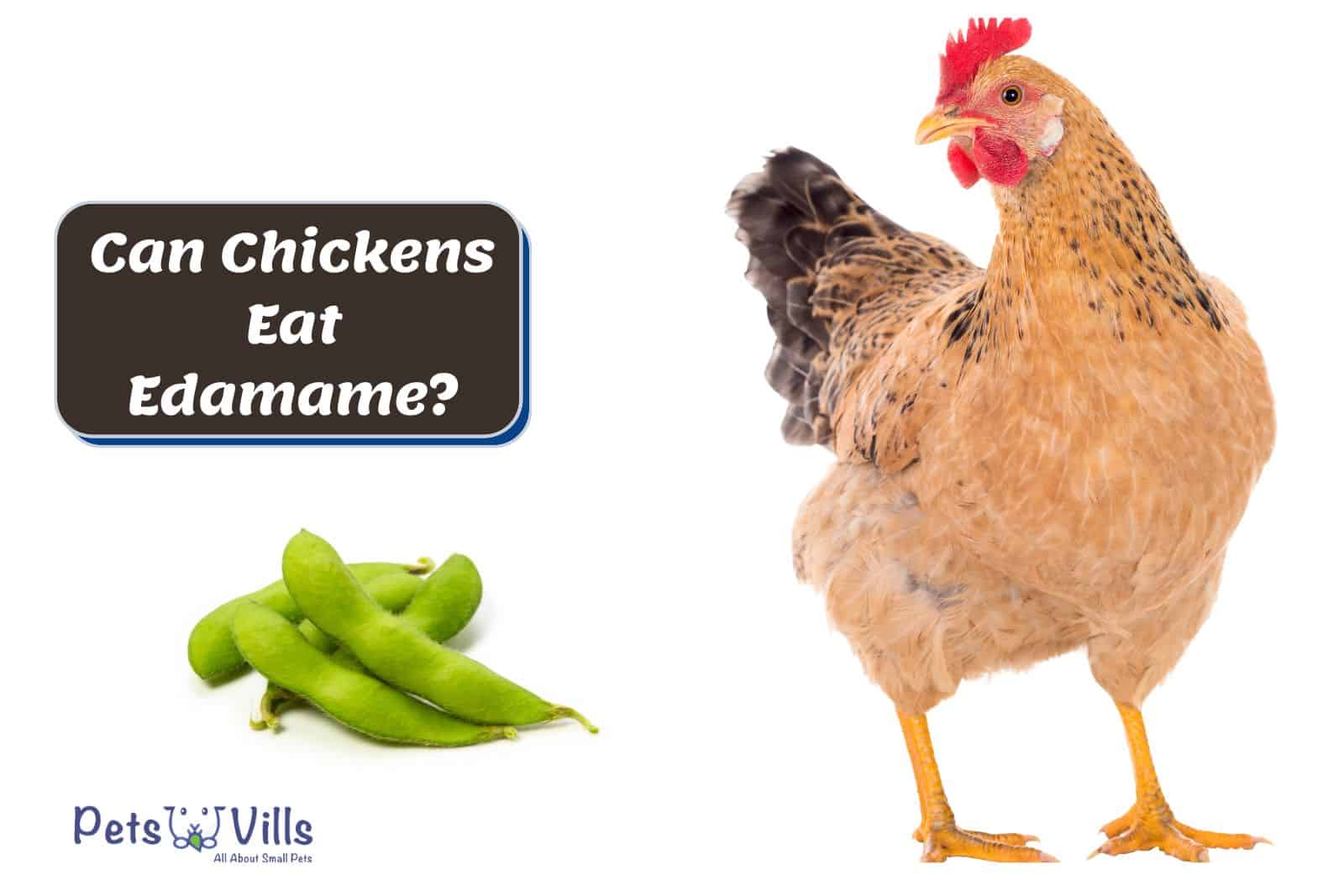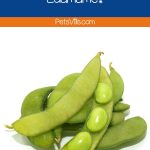Edamame is a sought-after item among health foods by all health nuts. It made me ponder if I could give it to my chickens to promote better health.
Can chickens eat Edamame? After some research, I found chickens can eat edamame as it’s full of vital nutrients and protein. But owners must cook it first since raw edamame contains a dangerous toxin (1).
Of course, determining whether it’s safe and healthy only gives you part of the picture.
So keep reading to learn more about this healthy treat!
Table of Contents
Key Takeaways
- Edamame can be healthy, safe treat for chickens when prepared correctly. If you cook them well enough, edamame will give poultry numerous nutrients.
- Several health benefits come from chickens eating edamame. Your feathery friends will get an excellent additional fiber, protein, and calcium source.
- But edamame must be given to chickens in moderation to prevent overeating. I’d suggest twice per week to help keep your chickens healthy.
Is It Healthy For Chickens To Eat Edamame?
Cooked “edamame, which is the soybean in the pod,” is a healthy treat option for chickens (2). It’ll give them various health benefits to promote a better living situation.
I’ll even discuss a few below to provide some context into what edamame can offer. So let’s not waste any more time and dive into some of the chicken health benefits:
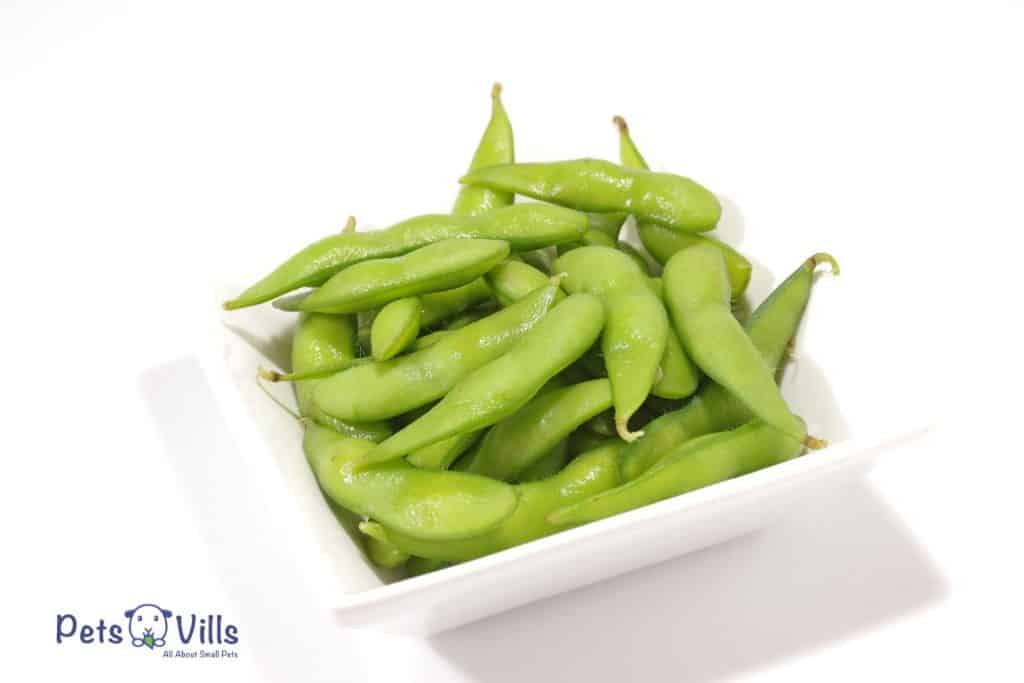
#1 High in Protein
One of my favorite things about edamame is it offers plenty of protein. After all, chickens need protein to help build and repair muscles.
It’s also an essential building block of cartilage, skin, and blood. So you can see why edamame being a source of protein, is such a beneficial trait.
A solid protein source like edamame will also help hens lay quality eggs. Experts recommend pullets seven to eighteen weeks old need 17% to 18% protein.
After nineteen weeks, the hens need about 16% protein in a balanced diet. These guidelines have helped me get younger hens through this process numerous times.
#2 High in Calcium
Edamame is renowned for its high calcium content that helps improve bone health. Therefore, it’ll effectively strengthen your chicken’s bone tissues and prevent brittle bones.
Similarly, edamame’s high calcium content strengthens their beaks and nails. It’s an effortless way to help prevent them from getting brittle and breaking too easily.
I’ve also found that edamame’s calcium helps hens who are laying eggs. In fact, it plays a massive role in the development of eggs.
If a hen eats more calcium, their eggs will be much stronger and healthier. Plus, it makes the eggs more flavorful to whoever eats them.
These reasons are why edamame is a top healthy treat for chickens or hens. It just produces a much smoother and more effective outcome for everyone involved.
#3 High in Fiber
Poultry owners will be thrilled to know edamame is an excellent source of fiber. So offering to their chickens will improve and prevent any digestive issues.
For instance, I had a few chickens suffering from diarrhea last summer. But after I added a little edamame into their feeding schedule, those issues disappeared immediately.
You’ll also benefit from edamame’s fiber content helping with regular bowel movements. After all, this nutrient for chickens keeps the food moving along the digestive tract.
Is Edamame Bad for Chickens?
Edamame can be a dangerous item for chickens. However, in this scenario, they’d have to consume raw edamame that contains trace amounts of toxin (3).
But it’s not likely any side effects would occur. In fact, your chickens would have to eat a massive amount of raw edamame to produce any side effects.
In any case, I’d suggest avoiding uncooked edamame entirely to prevent any issues. You’re better off staying safe by using cooked edamame to remove those toxins.
I also have to point out that this green soybean is usually cooked and seasoned with salt. Chickens don’t react well to salt in large quantities.
So you’ll want to feed them cooked edamame without any seasoning. As a result, it’s best to avoid edamame that’s sold in grocery stores.
These products are often processed while containing sodium and other additives. I’d recommend picking up some from a local produce stand or farmer.
Can Chickens Eat Edamame Pods?
Edamame pods and shells are OK to feed chickens. However, I must advise against serving them whole because it could be a choking hazard.
Instead, I suggest cutting them into small pieces before tossing them into the chicken coop. It’s what I do when wanting to spice up my chicken feed with some edamame pods.
Furthermore, if you chuck the entire thing to the chickens, they will peck and eat the edamame and leave the pods alone. So it’s best to split it open and take out the beans.
Are you curious about what else your feathered friends can munch on? We’ve got you covered with our informative articles on “can chickens eat leek leaves” and “can chickens have dill“.
How To Feed Edamame To Chickens
Poultry owners can use a few methods when feeding edamame to chickens. You can feed them fresh, frozen, or cooked edamame as they aren’t picky eaters.
So the choice comes down to deciding what one you prefer. I’ll make this easier by discussing all of them below:
#1 Fresh Edamame
I’ve found using fresh or organic edamame is the best way to feed the chickens. It earns this title by providing your chickens with the full benefit of edamame’s nutrition.
But again, I can’t stress enough to ensure the fresh/raw soybeans are cooked. It’ll prevent it from being a toxic food any toxin and make it entirely safe for chicken consumption.
Depending on the size of the edamame beans, you may need to cut them into smaller pieces. It can become a choking hazard for them since raw uncooked beans are hard.
But if the edamame is small, you can feed it to them. Your chickens will then love snacking on them in their chicken coop.
#2 Frozen Edamame
Frozen edamame is a great way to keep them hydrated while benefiting from its nutrition. To feed the frozen edamame, let it thaw or give it to your chickens right out of the freezer.
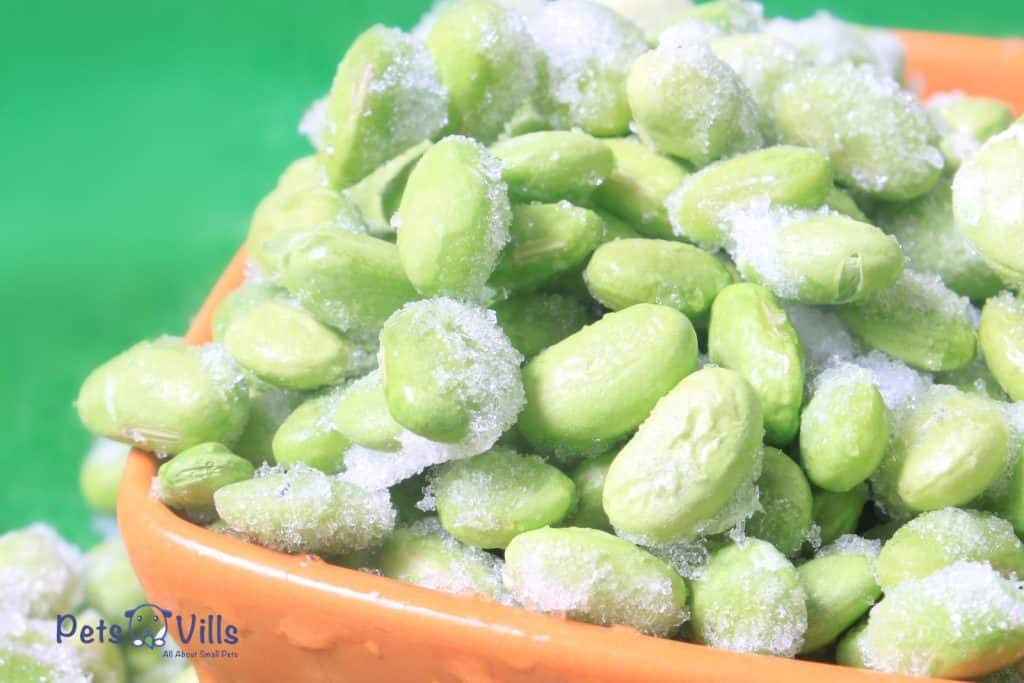
If feeding them frozen edamame, the chickens will usually peck at it until it breaks open. Once they do, they eat the beans inside.
It can be quite fun to watch them peak at the frozen edamame. In some cases, a chicken may get a little confused by the frozen legume, which is pretty funny.
#3 Cooked Edamame
Cooking edamame is another method of feeding the legume to the chickens. Cooked edamame will be softer and easier for them to eat.
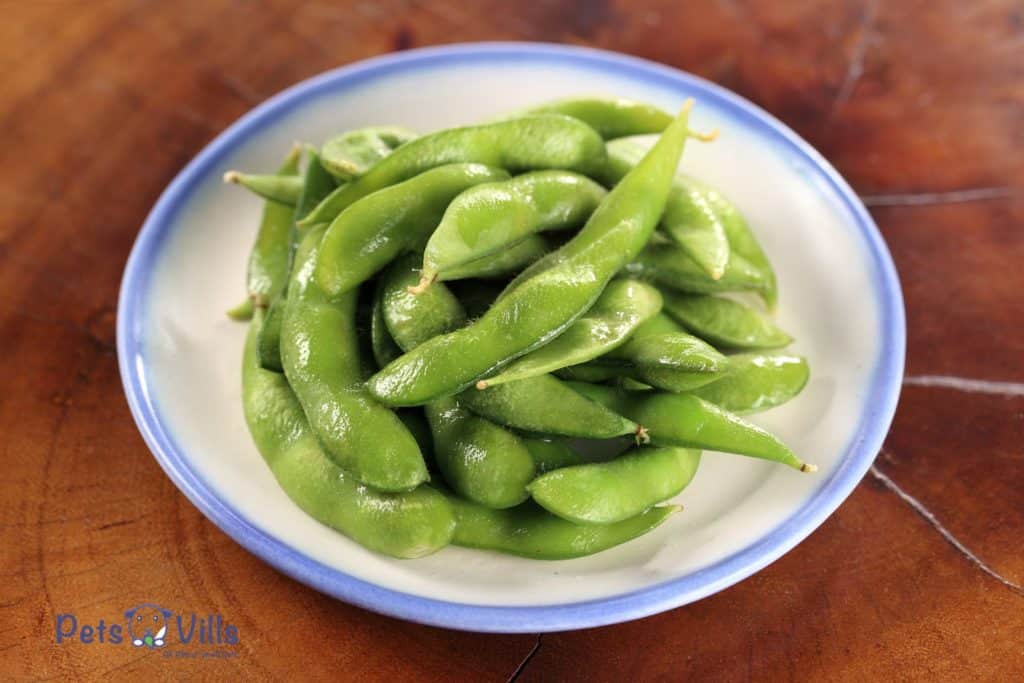
The pods also will be soft and edible for them to eat. However, you’ll still need to cut them into smaller pieces so they will be easier to eat and digest.
How Much And How Often To Feed Edamame To Chickens
Edamame isn’t a food item to use as a dietary staple or primary food source. Instead, it’s a healthy snack for chickens that can help boost their health.
So if you want a more precise number, edamame and other secondary food items should only make up 10% of a chicken’s nutrition (4). Anything more will cause them issues.
In fact, feeding them too much edamame could cause them to become full. Your chickens then may not eat their primary food.
So at each feeding, it’s best to keep the quantity of edamame small. It’s a simple way to ensure your backyard chickens get their required nutrients.
Long story short, give edamame to chickens in moderation. A good rule to follow would be a couple of times per week, which is what I do with resounding success.
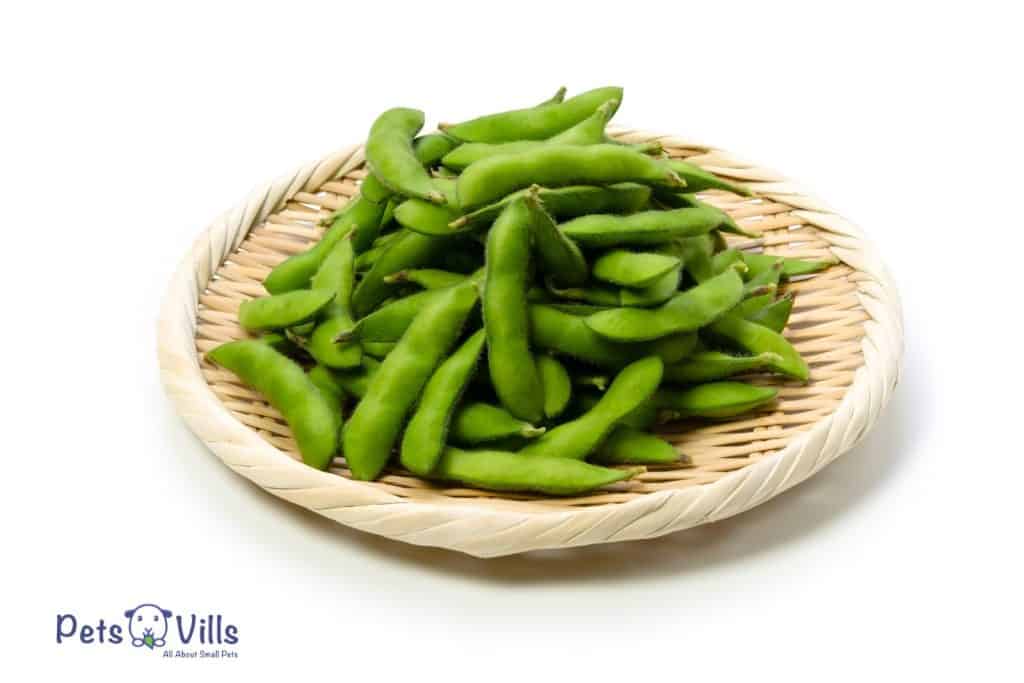
As for the other 90% of their diet requirement, it should be made up of commercial feeds or poultry feeds. These products are formulated to meet the chicken’s essential nutrients.
Other Legumes That Chickens Can Eat
Edamame doesn’t have to be the only legume your chickens can enjoy. Here’s a list of some other favorites that my feathered friends adore:
#1 Chickpeas
Chickpeas are a fantastic source of vitamins, minerals, and other nutrients. I’ve used them as an occasional treat for my chickens over the years.
But raw chickpeas do contain toxins that can harm the chickens. So always cook the legume thoroughly first to remove the toxins.
#2 Peas
Many people don’t know that regular old peas are a nutritious treat for chickens. It doesn’t matter if they’re cooked, raw, or frozen.
Instead, these small green legumes are quality sources of nutrients and provide many valuable vitamins/minerals. Peas are also fun food and will keep them busy.
For instance, my chickens like to peck and chase after them. So it’s hilarious to see them try and catch up to rolling pea.
#3 Black Beans
The last notable legume is black beans, which are solid for chickens. But you do need to cook them first because raw or undercooked beans contain hemagglutinin.
It’s a hazardous toxin for chickens, which can be deadly even in trace amounts. However, cooked beans will provide a lot of nutrients for chickens, especially protein.
FAQs
#1 What kind of beans can chickens not eat?
Several types of beans aren’t safe for chickens, including kidney beans and pinto beans. It’s best to stick with edamame peas and green beans regarding legumes.
#2 How toxic is raw edamame?
Raw or uncooked edamame is relatively toxic, even known to make humans quite ill. So please don’t underestimate its impact on your feathery friend.
Conclusion
Overall, the answer to can chicken eat edamame is a resounding yes. But these pods must be cooked before serving them as tasty treats for chickens.
After it’s adequately prepared, edamame will be a healthy snack they’ll love. It may even end up among their favorite foods after a serving or two!
Resources
1. Backyard Chickens, Rabbits, Soybeans Can Meet Household Protein Demand [Internet]. Michigan Technological University. 2021 [cited 2023 Feb 7]. Available from: https://www.mtu.edu/news/2021/05/backyard-chickens-rabbits-soybeans-can-meet-household-protein-demand.html
2. Beans, Peas, and Lentils | MyPlate [Internet]. www.myplate.gov. Available from: https://www.myplate.gov/eat-healthy/protein-foods/beans-and-peas
3. Nguyen L, Steinberg F. Nutrition and Health Info Sheet: Soy For Health Professionals [Internet]. 2016. Available from: https://nutrition.ucdavis.edu/sites/g/files/dgvnsk426/files/content/infosheets/factsheets/fact-pro-soy.pdf
4. Common nutrition-related problems of poultry | Animal & Food Sciences [Internet]. Uky.edu. 2017. Available from: https://afs.ca.uky.edu/poultry/common-nutrition-related-problems-poultry
Alina Hartley is a small-town girl with a ginormous love of bearded dragons. It all started with Winchester, a baby bearded who was abandoned at the shelter by his former owners because of a birth defect that caused one front leg to be shorter than the other. Alina originally went to the shelter looking for a guinea pig, but one look at Winchester and it was love at first sight. From that day on, Alina has dedicated her life to learning everything she can about bearded dragons. She loves helping new beardie parents start their incredible journey with these magnificent reptiles.
Follow her on:
LINKEDIN
TWITTER.
Read her latest articles HERE
Learn more about her HERE.

